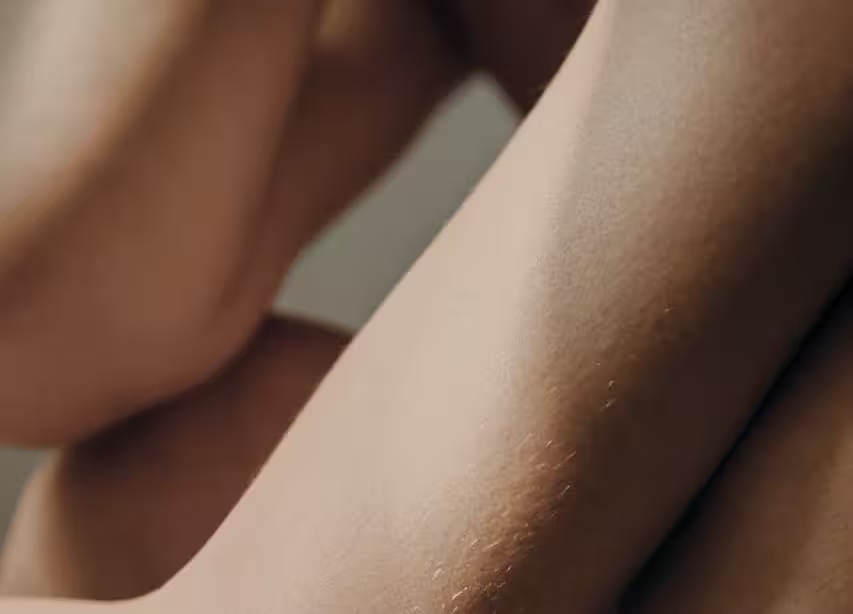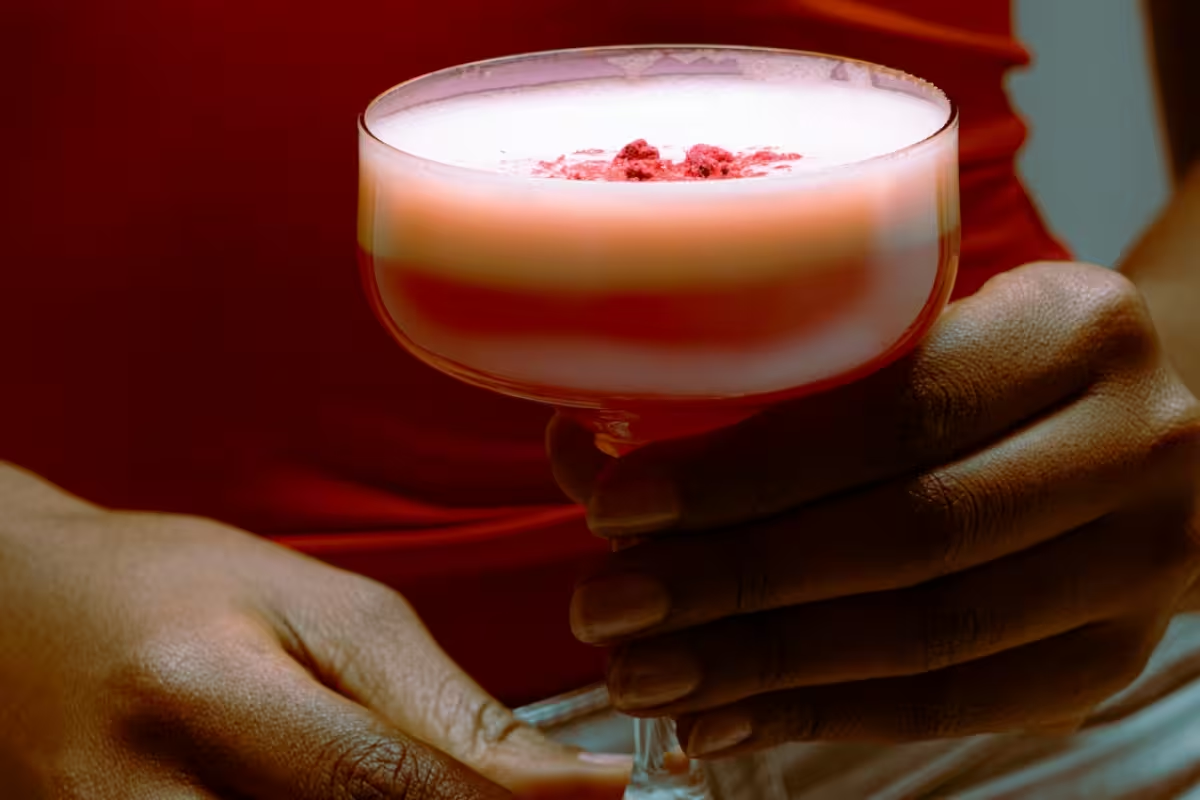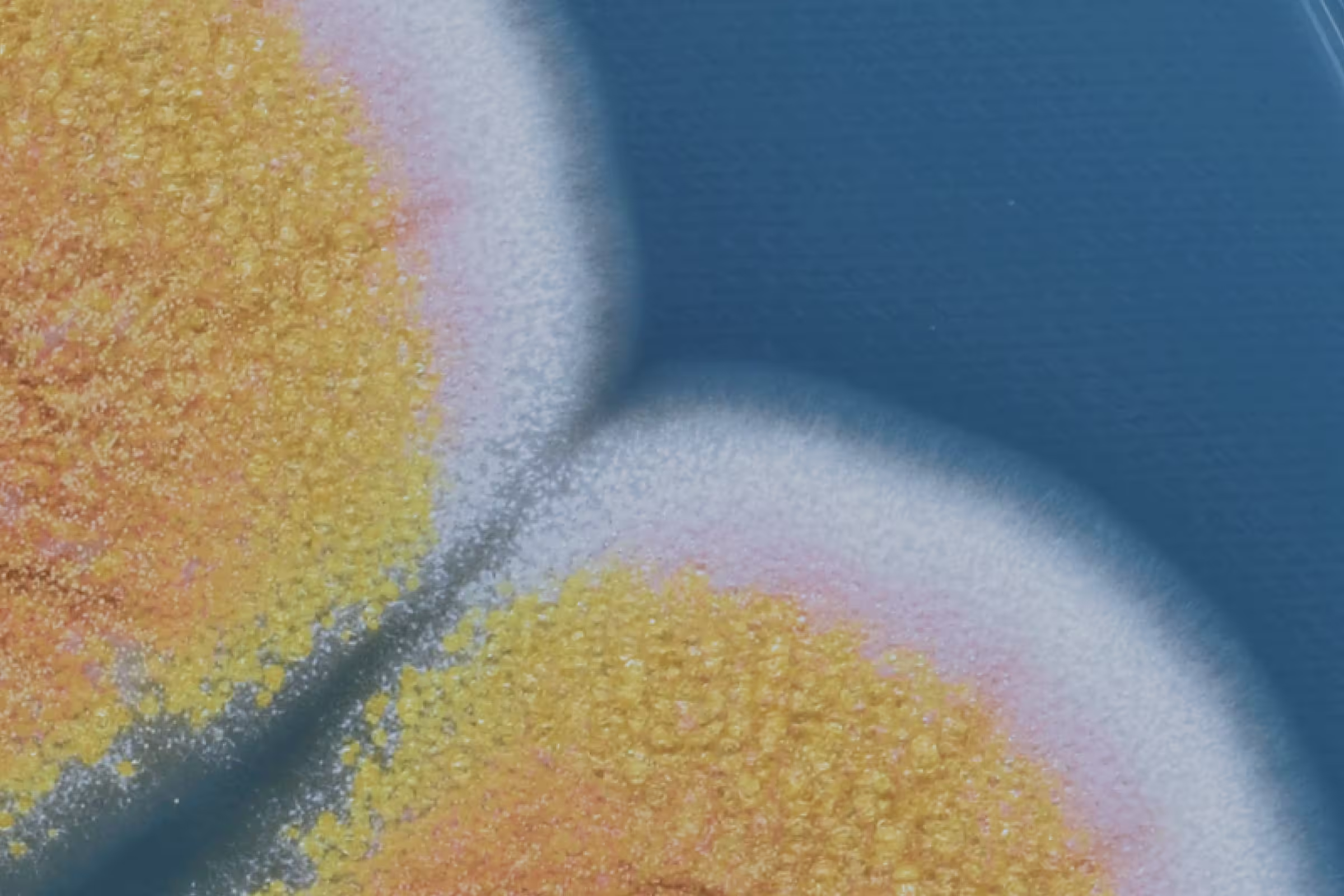

The Different Stages of Interstitial Cystitis Explained
Discover the stages of interstitial cystitis, its symptoms, and available treatments, along with insights on its connection to the vaginal microbiome.
Words by Caitlyn Tivy, DPT, OCS
Scientifically edited by Dr. Krystal Thomas-White, PhD
Medically reviewed by Dr. Christine Vo, MD
Living with interstitial cystitis (IC) can be a challenging and frustrating experience for many women. It’s a chronic bladder condition that causes pain, frequent urination, and an intense urge to pee, often without an infection present. But what exactly is IC, and how does it progress? This article will walk you through the stages of interstitial cystitis, how it’s diagnosed, and what you can do to manage it.
What is interstitial cystitis?
Interstitial cystitis is a bladder-related pain condition. In addition to being a tongue-twister to pronounce, IC also goes by a few other names: painful bladder syndrome (PBS) and urologic chronic pelvic pain syndrome (UCPPS).
As its alternative names imply, interstitial cystitis is chiefly characterized by chronic pelvic pain. Its symptoms are wide-ranging and variable, though many people with the condition will experience a common constellation of bladder and urinary complaints, including:
- Bladder pain
- Urinary urgency (an intense, “gotta go now” sensation of needing to pee)
- Frequent urination.
If you’ve had urinary tract infections (UTIs), these symptoms may sound familiar. IC and UTIs share the same set of symptoms. However, no infection can be identified in people with IC, and their symptoms don’t respond to antibiotic treatment.
According to the American Urologic Association, an IC diagnosis can be considered when symptoms have been present for more than six weeks. This criterion can complicate diagnosis, however, given that interstitial cystitis symptoms often come and go in varying intensities. Exacerbations, or “flares”, of IC symptoms can be mistaken for recurrent infections and lead providers to prescribe repeating courses of antibiotics.

Recurrent symptoms? Get Evvy's at-home vaginal microbiome test, designed by leading OB-GYNs.
Who is affected by IC?
Interstitial cystitis is most commonly diagnosed in people assigned female at birth (AFAB). People born with penises can be affected by similar symptoms, but physicians classically have given them the diagnosis of chronic prostatitis (CP), aka chronic pelvic pain syndrome (CPPS). Recently, the significant overlap between the symptoms of IC/PBS and CP/CPPS led researchers to propose the all-inclusive term UCPPS, which can be applied regardless of one’s genital anatomy.
Researchers estimate that approximately 2.7 to 6.5% of AFAB folks live with IC, though many haven't been formally diagnosed. In the United States, this equated to an estimated 3.3 to 7.9 million women (aged 18+) affected by the condition (as of 2011). Given our incomplete understanding of IC and the frequency with which diagnosis is missed or incorrect, the condition may be even more prevalent than predicted in the research.
The stages of interstitial cystitis
Although IC varies from person to person, it can often be broken down into stages of severity. These stages aren’t necessarily linear — symptoms may flare up unpredictably or subside for periods.
- Mild IC (early stage): In the early stages of interstitial cystitis, symptoms may be mild but noticeable. You might start to feel discomfort or mild discomfort in the pelvic area. You may need to pee more frequently, but at this point, it may still feel manageable. Many women in this stage assume they’re dealing with a urinary tract infection or some temporary irritation, as the symptoms tend to come and go.
- Moderate IC (intermediate stage): In this stage, the symptoms become more persistent and disruptive. You may find yourself needing to pee frequently throughout the day and night, often with a sense of urgency. Pelvic pain becomes more constant, and certain triggers — like specific foods, stress, or even your menstrual cycle — can make symptoms worse. This is often when women start seeking medical help because the symptoms are interfering with daily life.
- Severe IC (advanced stage): For some, IC can progress to a more severe form that causes chronic bladder pain and urination is needed as often as every 30 minutes. The bladder may feel sensitive and inflamed, and activities like sexual intercourse, exercise, or even wearing tight clothing can trigger severe discomfort. Many women in this stage find it hard to function normally due to the impact on their bladder health, energy levels, and emotional well-being.
What causes IC?
The biomedical system still doesn't fully understand the exact cause of IC. As such, it is considered a “diagnosis of exclusion”, which means that medical providers must first rule out other potential conditions that could be causing a patient’s symptoms before they can diagnose interstitial cystitis. Other diagnoses they must consider range from UTIs and STIs (sexually transmitted infections) to allergic reactions and cancer.
As you may imagine, this can lead to a long, drawn-out diagnostic process involving extensive testing and often, a fair amount of worry. IC diagnosis is further complicated by the fact that the condition may have different causes in different people. Many medical syndromes behave this way, with multiple distinct causes resulting in similar symptoms: the common cold, which can be caused by hundreds of different viruses, is an excellent example of this phenomenon.
Let’s consider a few current hypotheses behind the causes of IC.
Genetics
To date, no specific genetic mutation has been linked to interstitial cystitis. However, there appears to be an as-yet-unknown genetic link: IC is more likely to affect both members of identical twin pairs than fraternal twin pairs. Additionally, IC tends to run in families: if one of your first-degree female relatives (i.e., your mother, sister, or daughter) has interstitial cystitis, your chance of also developing interstitial cystitis it is seventeen times higher than average.
Neurologic origin
All conditions involving chronic pain are complex, and interstitial cystitis is no exception. Current research points to the importance of the nervous system as a key driver of chronic pain, but there is still much work to be done in this arena.
The major structures of the human body are all filled with neurons, specialized cells that help transmit messages to and from the central nervous system (the brain and spinal cord). If these neurons are irritated or malfunctioning in some way, the brain may interpret their signals as pain. Neuronal irritation can arise from infection or an injury in the region. The signaling pathways that neurons use to communicate with the central nervous system can also be disrupted, leading to the development of pain sensations.
It’s also possible that the neurons themselves may be misfiring and sending false signals to the brain and spinal cord. These aberrant signals can cause the brain to perceive pain in an area where no damage or pathologic process has occurred. (Note: in no way does this finding imply that the pain “isn’t real” — it is very real and worthy of care! To be most effective, said care should target the nervous system.)
We don’t fully understand why neurons misfire like this in people with IC. Possible triggers include prior trauma (like surgery or accidental injury), stress, and/or an overactive immune system that creates excessive, chronic inflammation.
Chronic bladder inflammation
Some people with interstitial cystitis have reddish lesions on the inner wall of their bladder called Hunner lesions. These lesions are associated with chronic inflammation of the bladder lining (the epithelium), and this inflammation is a potential driver of pain.
However, the absence of Hunner lesions doesn’t necessarily rule out a diagnosis of interstitial cystitis or painful bladder syndrome. While estimates of the prevalence of these lesions vary widely, likely, that more than half of people with IC don’t have Hunner lesions. In these cases, inflammation of the bladder lining is less likely to be the source of a person’s symptoms.
Infectious causes
Researchers have long been trying to identify an infectious agent that could cause interstitial cystitis, but they have yet to establish a single clear culprit.
Different research groups have investigated bacterial, viral, and fungal infections, and all three types have been implicated as possible triggers for IC development. This suggests that there may be multiple unique pathways leading to the development of interstitial cystitis.
The inability to identify a clear infectious cause of IC led an international panel of experts to conclude that it should only be diagnosed when a person presents with symptoms in the absence of an identifiable infection.
Interestingly, some have suggested that recurrent UTIs could cause the nerves in the bladder to become hypersensitive. This hypersensitization could theoretically lead to chronic pain even after the infections have cleared. Currently, there is very little research to confirm or deny this hypothesis, and some experts in the field find it implausible.
How do healthcare providers distinguish between IC and a UTI?
As we’ve discussed, medical providers are required to rule out other potential causes of symptoms before considering a diagnosis of interstitial cystitis. The symptoms of IC and UTIs overlap considerably, so providers will typically test for UTIs early in the diagnostic process.
Unfortunately, standard medical testing for UTIs is innately flawed. Standard urine tests are biased to test primarily for a single bacterial species (E. coli), and they struggle to identify other potential infectious strains. In people with urinary tract infection symptoms, standard cultures may still miss up to 50% of all known pathogens (i.e. infectious agents) that can infect the urinary system.
To further complicate this process, 20% of women with UTI symptoms will test negative for infection by standard urine analysis. The limitations of standard medical testing for UTIs make it entirely plausible that some people with diagnosed IC currently have or previously had an undiagnosed UTI.
How is IC treated?
As with many other chronic pain conditions, there are a variety of options for treating interstitial cystitis, but none have been proven 100% effective. Given that IC may have different causes in different people, it’s perhaps unsurprising that the same treatment won’t work well for everyone. Many people with IC experiment with a variety of treatments to determine which works best for them.
Lifestyle factors play an important role in the management of interstitial cystitis: for many people, certain foods, beverages, and/or activities can trigger a symptom flare, so avoiding these triggers can help minimize symptoms.
Pelvic physical therapy can be another helpful tool. A specialized pelvic PT can teach you strategies to manage symptoms, decrease the sensitivity of nerves in and around the pelvis, and reduce excessive muscle tension (which can cause pain) in the pelvic muscles.
Some people benefit from medications that can be taken orally or instilled directly into the bladder through a catheter. In rare cases, a surgeon can implant a nerve-stimulating device near the pelvis to improve bladder emptying and reduce pain.
If you have interstitial cystitis, it’s important to discuss all treatment options with your healthcare team to determine the best fit for you. A urogynecologist who specializes in treating people with interstitial cystitis and bladder pain can be a valuable addition to your care team.
Is there a link between IC and the vaginal microbiome?
Because interstitial cystitis is still poorly understood — and like many women’s health conditions, under-researched — we can’t yet say how or if the vaginal microbiome may be connected to it.
Interestingly, recent research shows that many urinary pathogens live inside the vagina before infecting the bladder. It’s therefore possible that the vaginal microbiome may be acting as a “reservoir” for pathogens that cause urinary infections. If researchers eventually prove that recurrent infections can cause IC, it may be worth further investigating this link.
The bladder and urinary system itself has its unique microbiome, just like the vagina and the gut. Like its neighboring microbiomes, the urinary microbiome varies between individuals and plays a role in both health and disease.
The urinary and vaginal microbiomes are “microbially linked”: a strain of bacteria living in your vagina can also live in your urinary tract, and vice versa. As a result, changes in your vaginal microbiome may affect your bladder: it’s possible (though still unproven) that a protective vaginal microbiome may also protect your bladder microbiome and prevent bladder-related symptoms.
At Evvy, we’re constantly working to untangle these complex relationships with the end goal of helping everyone with a vagina live their healthiest life. If you live with interstitial cystitis and want to learn more about your vaginal microbiome, check out the Evvy Vaginal Health Test.
FAQ
What are the 4 Cs of interstitial cystitis?
The "4 C's" of interstitial cystitis refer to common dietary triggers that can worsen symptoms: citrus, caffeine, carbonated drinks, and chocolate. These foods and beverages are known to irritate the bladder, leading to increased discomfort, urgency, and frequency of urination in IC patients. Many women with the condition find that avoiding or limiting these triggers can help reduce flare-ups and improve their overall symptoms. Managing diet, along with other lifestyle factors, is often part of an IC treatment plan to help alleviate pain and bladder irritation.
What is the final stage of interstitial cystitis?
In the most severe stage of interstitial cystitis, people may experience severe and persistent symptoms that can significantly impact their quality of life. At this stage you might experience chronic pelvic pain and really intense urinary frequency, sometimes requiring trips to the bathroom as often as every 30 minutes. The bladder’s ability to hold urine may decrease, leading to frequent, painful urination of small amounts. Pain may spread beyond the bladder to the pelvic region, and daily activities such as exercising, sexual intercourse, or even wearing tight clothing can trigger intense discomfort. In this advanced stage, the bladder lining may be severely inflamed, and some patients may develop Hunner's lesions (ulcers on the bladder wall), which contribute to chronic pain. Treatment at this stage may involve more aggressive approaches, such as medications directly instilled into the bladder, nerve stimulation devices, or in rare cases, surgery to reduce symptoms.
Does interstitial cystitis get progressively worse?
Interstitial cystitis is different for everyone. Some people have stable symptoms, while others may experience flare-ups. Triggers like stress, diet, hormonal changes, or infections can make symptoms worse, but it doesn't mean the condition is getting worse permanently. Some people have times when their symptoms improve or disappear, while others may find their symptoms getting worse, especially without proper management. But remember, IC doesn’t always get worse over time. With the right treatment, like lifestyle changes, dietary adjustments, and medical therapies, many people can manage their symptoms.





